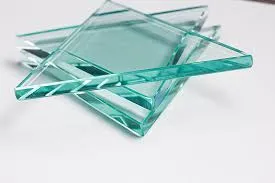The Aesthetic and Functional Appeal of Opaque Glass Wall Panels
In contemporary architecture and interior design, the use of opaque glass wall panels has gained popularity due to their unique blend of aesthetic appeal and functional benefits. These panels serve as an innovative solution, allowing for distinctive design possibilities while addressing practical needs.
Opaque glass wall panels offer a modern alternative to traditional partitioning methods. Unlike solid walls that can make spaces feel enclosed and claustrophobic, opaque glass panels maintain a sense of openness and fluidity in an environment. They allow light to filter through while offering privacy—an essential requirement for many commercial and residential spaces. This striking combination makes them particularly appealing in offices, conference rooms, and even residential homes.
One of the profound advantages of using opaque glass is its versatility in design. Available in various textures, colors, and finishes, these panels can complement any aesthetic—from minimalist to industrial to luxurious. By incorporating different opacities and patterns, designers can create visual interest and character without compromising the functionality of the space. For example, a frosted glass panel can create an elegant separation between spaces while still allowing daylight to permeate, enhancing the overall ambiance.
opaque glass wall panels
Moreover, opaque glass wall panels are often used to create focal points within a room. They can be incorporated in various ways, such as feature walls, room dividers, or even sliding doors. This flexibility allows homeowners and designers alike to execute creative visions tailored to individual preferences. The adaptability of opaque glass extends beyond mere aesthetics; they can also accommodate technical features such as integrated lighting or digital displays, further enhancing their utility.
From a practical standpoint, opaque glass wall panels are easy to maintain and clean, adding to their appeal. Unlike fabric or traditional wood panels that may absorb dust and odors, glass surfaces can be wiped clean with minimal effort, making them ideal for high-traffic areas or places where hygiene is paramount. Additionally, advancements in technology have led to glass being treated for better durability and resistance to scratches and stains, ensuring that these panels remain pristine for years to come.
Environmentally conscious consumers will appreciate the sustainability factor associated with glass materials. Opaque glass wall panels can contribute to energy efficiency in buildings. They can be designed to allow natural light to flood the interior, reducing reliance on artificial lighting during the day. When combined with energy-efficient framing systems, these panels help create a more sustainable living or working space.
In conclusion, opaque glass wall panels represent a harmonious fusion of style and practicality. Their ability to enhance light flow while providing privacy, customizable design options, ease of maintenance, and sustainability make them a coveted choice in modern spaces. As architects and designers continue to push the boundaries of design, the use of opaque glass panels will undoubtedly become an integral part of the contemporary architectural landscape.
 Afrikaans
Afrikaans  Albanian
Albanian  Amharic
Amharic  Arabic
Arabic  Armenian
Armenian  Azerbaijani
Azerbaijani  Basque
Basque  Belarusian
Belarusian  Bengali
Bengali  Bosnian
Bosnian  Bulgarian
Bulgarian  Catalan
Catalan  Cebuano
Cebuano  Corsican
Corsican  Croatian
Croatian  Czech
Czech  Danish
Danish  Dutch
Dutch  English
English  Esperanto
Esperanto  Estonian
Estonian  Finnish
Finnish  French
French  Frisian
Frisian  Galician
Galician  Georgian
Georgian  German
German  Greek
Greek  Gujarati
Gujarati  Haitian Creole
Haitian Creole  hausa
hausa  hawaiian
hawaiian  Hebrew
Hebrew  Hindi
Hindi  Miao
Miao  Hungarian
Hungarian  Icelandic
Icelandic  igbo
igbo  Indonesian
Indonesian  irish
irish  Italian
Italian  Japanese
Japanese  Javanese
Javanese  Kannada
Kannada  kazakh
kazakh  Khmer
Khmer  Rwandese
Rwandese  Korean
Korean  Kurdish
Kurdish  Kyrgyz
Kyrgyz  Lao
Lao  Latin
Latin  Latvian
Latvian  Lithuanian
Lithuanian  Luxembourgish
Luxembourgish  Macedonian
Macedonian  Malgashi
Malgashi  Malay
Malay  Malayalam
Malayalam  Maltese
Maltese  Maori
Maori  Marathi
Marathi  Mongolian
Mongolian  Myanmar
Myanmar  Nepali
Nepali  Norwegian
Norwegian  Norwegian
Norwegian  Occitan
Occitan  Pashto
Pashto  Persian
Persian  Polish
Polish  Portuguese
Portuguese  Punjabi
Punjabi  Romanian
Romanian  Russian
Russian  Samoan
Samoan  Scottish Gaelic
Scottish Gaelic  Serbian
Serbian  Sesotho
Sesotho  Shona
Shona  Sindhi
Sindhi  Sinhala
Sinhala  Slovak
Slovak  Slovenian
Slovenian  Somali
Somali  Spanish
Spanish  Sundanese
Sundanese  Swahili
Swahili  Swedish
Swedish  Tagalog
Tagalog  Tajik
Tajik  Tamil
Tamil  Tatar
Tatar  Telugu
Telugu  Thai
Thai  Turkish
Turkish  Turkmen
Turkmen  Ukrainian
Ukrainian  Urdu
Urdu  Uighur
Uighur  Uzbek
Uzbek  Vietnamese
Vietnamese  Welsh
Welsh  Bantu
Bantu  Yiddish
Yiddish  Yoruba
Yoruba  Zulu
Zulu 

